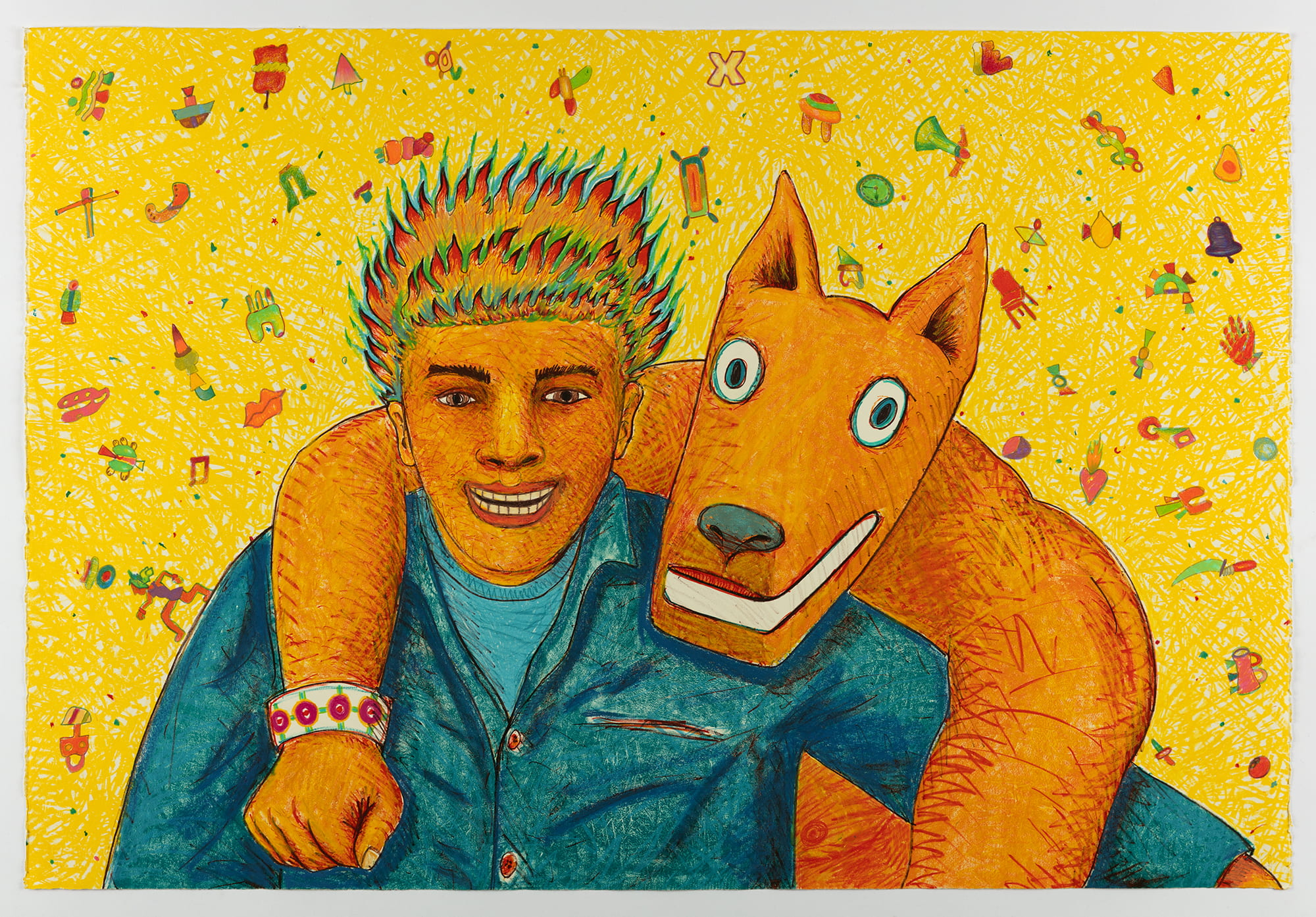‘Magu’ magic
Exhibit showcases work of iconic Chicano artist and UCI alum Gilbert Luján

Visitors to UCI’s University Art Galleries will be transported to “Magulandia” as the work of pioneering Chicano artist and UCI alumnus Gilbert “Magu” Luján takes over the space for the next two months. It’s a world where low riders driven by anthropomorphic dogs cruise the streets of Los Angeles and Aztec gods zip along on skateboards.
The exhibit, “Aztlán to Magulandia: The Journey of Chicano Artist Gilbert ‘Magu’ Luján,” is part of the Getty Foundation’s Pacific Standard Time: LA/LA initiative. It will run in the Claire Trevor School of the Arts’ University Art Gallery and Contemporary Arts Center Gallery from Oct. 7 to Dec. 16.
Luján, who died in 2011 at the age of 70, was one of the founding members of the Chicano art collective known as Los Four. His sketches and drawings, paintings and sculptures combine two central concepts: Aztlán, the mythic northern ancestral home of the Aztecs, and Magulandia, the term he coined for his work and the space in which he lived.
Exhibit curator Hal Glicksman directed the University Art Galleries in 1972 and calls Luján, who earned an M.F.A. in 1973, “one of the most imaginative alumni of UCI’s early years.”
He says: “Luján deserves credit for advancing the dialogue from fake Spanish mythology and warmed-over Mexican imagery to a real and vibrant Chicano art form born of the interaction of ideas from the streets with those of the art academies and universities.”
Naiche Luján, the artist’s son and administrator of his estate, says UCI played an important role in his father’s creative development.
“His time there was very formative,” he says. “Irvine was an experimental place; the art department was new. … It was a place that challenged art world conventions.”
He recalls his father as a “powerful force” who had an impact on everyone around him: “He developed an ideology around Chicano art and aesthetics that was infectious. He was a huge presence and certainly influenced my way of looking at the world.”
The Santa Monica home were Naiche Luján was raised doubled as his father’s art studio and was a hub for artists, writers and activists. The elder Luján tried to make his art accessible, which is apparent in his public works, including murals in Santa Monica and downtown L.A. and a series of hand-glazed ceramic tiles at the Hollywood/Vine metro station.
“My father loved to create public dialogue with art,” Naiche Luján says. “He saw his art as being accessible to children and people with all levels of education, not just trained elites. This exhibit between the Getty Foundation and UC Irvine is an ideal scenario to discuss his work and the cultural forces that shaped it.”
In an homage to the legendary Mental Menudo community forums the artist loved to organize, Naiche Luján will moderate talks with the same name at the University Art Gallery on Dec. 2 and 16.